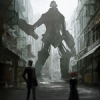Okay, let''s focus on design for a second.
Most people developing games designed to be played online by several participants (whether simple "multiplayer online" or "massively multiplayer online") don''t give enough consideration to communication and the potential for abuse and griefing. While its objectives are nothing like yours, I suggest reading the
GamaSutra postmortem on Disney Online''s Toontown.
One of the techniques they used is a chat menu that restricts things that can be said to those the game designers envisioned as being necessary to fully communicate within the constraints of the objectives of the game. Some people would consider that restrictive, but experience would seem to indicate that the "totally-open, free-form" holy grail of game design will remain elusive for a while to come. Rather than using an actual text menu, though, you could use an iconography of sorts (I''m taking a class on visual culture, so bear with me

) - various icons, thought/speech bubble expressions, "voiceovers", postures, gestures and other non-textual, non-verbal indicators of meaning.
The Sims uses this very effectively, as iNfuSeD pointed out. Beware, though: non-verbal communication is very much culture-specific. What means one thing to, say, North Americans, could mean something completely different to Austrians.
You could provide keyboard shortcuts to the various icons, etc.
The majority of our lives are spent in repetitious and mundane activities, which is why our games, novels and so forth tend to focus on the fantastic - from romances that transcend space and time to noble quests for honor and glory to heroic deeds that save the world from power-mad megalomaniacs. If you''re going to simulate daily life, you''re going to have to either elevate the drama in the every day - instead of just working at the office, have huge confrontations, office pools, intrigues, parties and so forth - or focus on certain activities over others. Note that we typically pay very little attention to our Sims who are at work in
The Sims...
Good luck. Even if you didn''t take my advice about Open Source

quote:
Original post by Impossible
...Opensource games tend to have a big problem getting decent artwork, which is something else to consider.
This isn''t that much of a problem, because Open Source audiences tend to be more tolerant of programmer art (they still play
NetHack ffs!) If you have solid gameplay in place, artists will quickly start volunteering their skills because
they get to see results almost immediately.




